April 2025
“Like so many of her raffish former residents and guests – from Dylan Thomas to Edie Sedgwick – the old broad had sunk into decrepitude, a husk of fading memories and spicy anecdotes. Now she’s had a sensitive facelift, but you can still tell she lived it large.” – The World of Interiors, October 2022
I sat at the little round table with my 1884 Martini and marvelled, just marvelled, at the restoration of The Hotel Chelsea.
It took 11 years.
(You think you had it rough, with your renovation that took nine months when it was supposed to take three?)
The Hotel Chelsea was built in 1884 – hence the name of my martini. When it was first erected on West 23rd Street in Chelsea, it was the tallest building in New York.
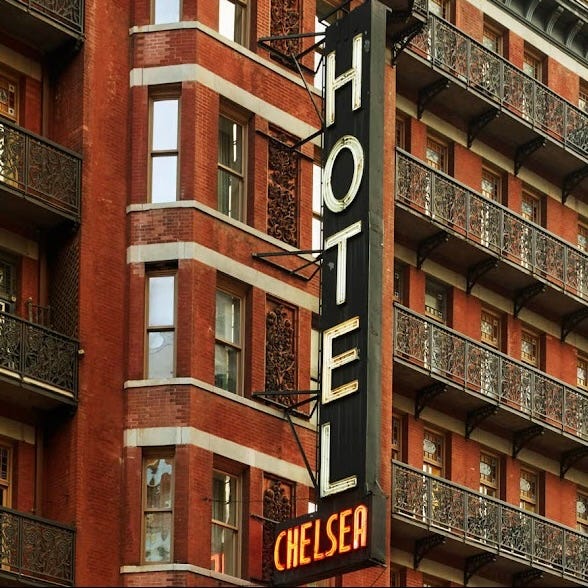
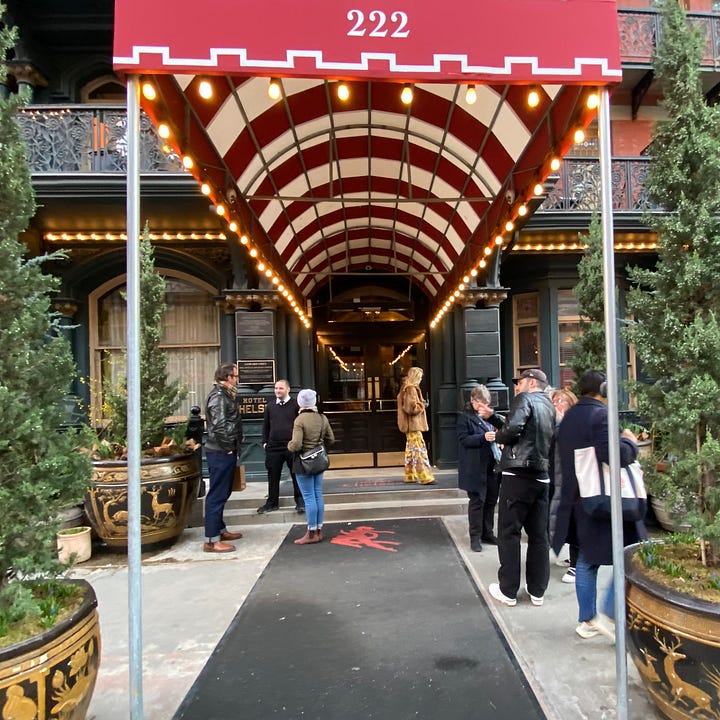
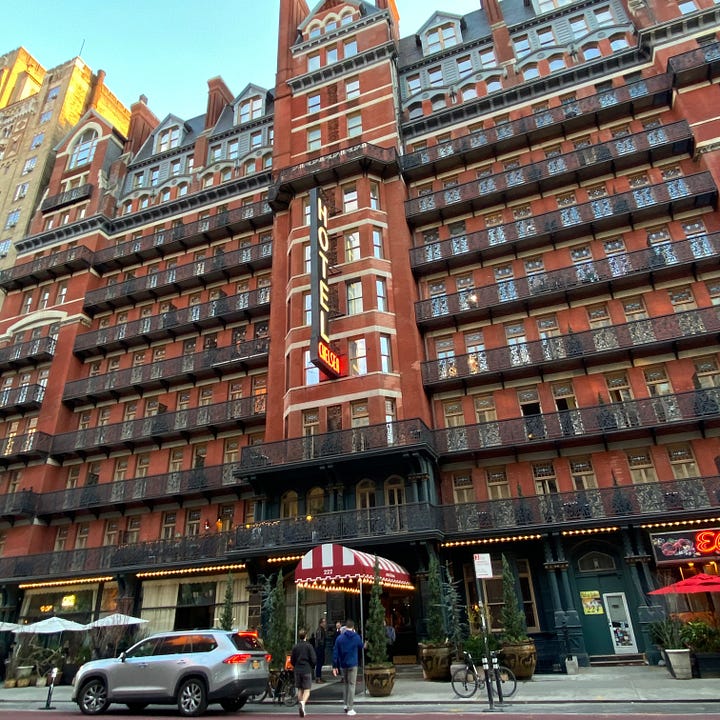
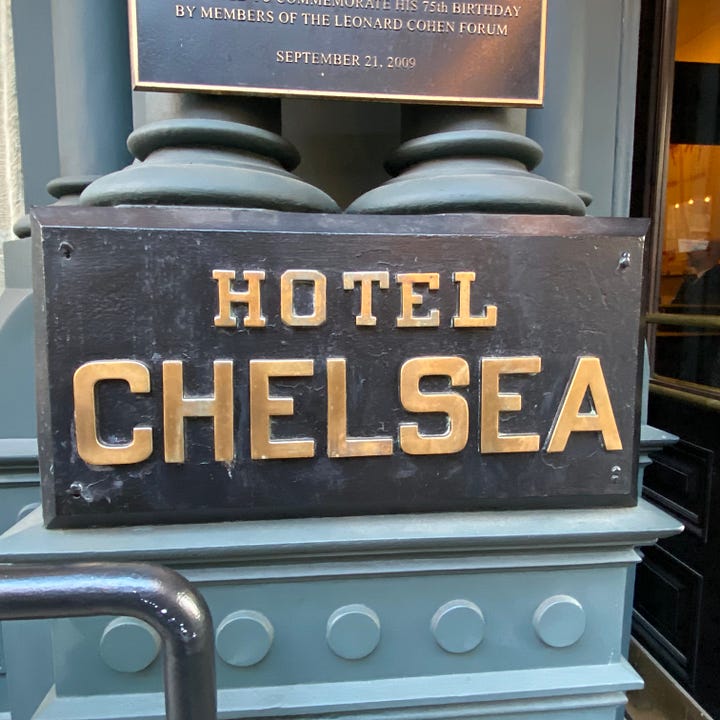
When owners Sean MacPherson, Ira Drukier and Richard Born bought The Hotel Chelsea it was all but dilapidated. The place had been running close to 150 years – and running down for decades. Can you imagine the state of the plumbing and electrics, never mind the floors, windows and ceilings?
It is now a luxury hotel with 125 guest rooms and 30 hotel suites.
There are bars and restaurants, function rooms, elevators and bathrooms. The famous iron staircase has been restored, and on the roof there’s a brand new fitness centre and spa.
The amount of work that the owners must have put into this transformation is staggering.
But here’s the reason for my marvelling. The owners didn’t crossly gut the place and replace everything, then finish it with new, matching furniture and fixtures.
They did something so very much harder.
Everywhere you look, there’s something original or old that’s been combined with something new.
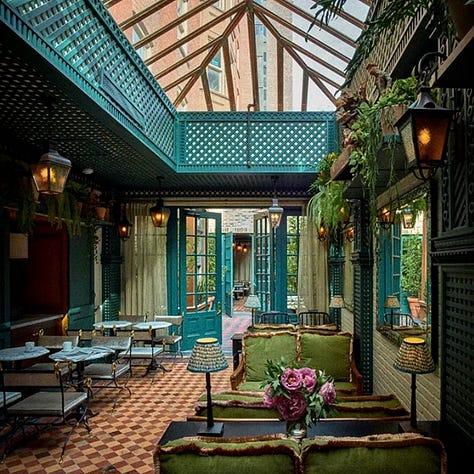

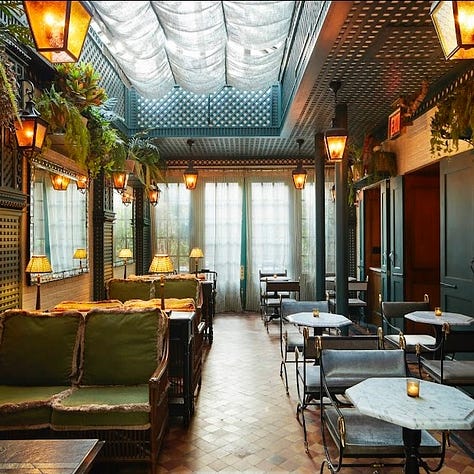
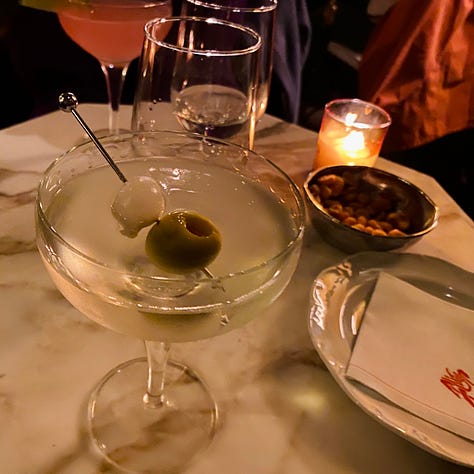
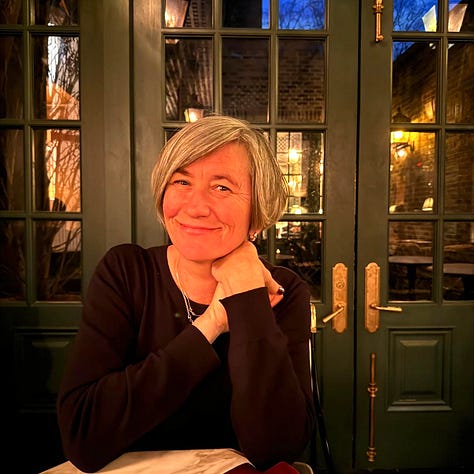
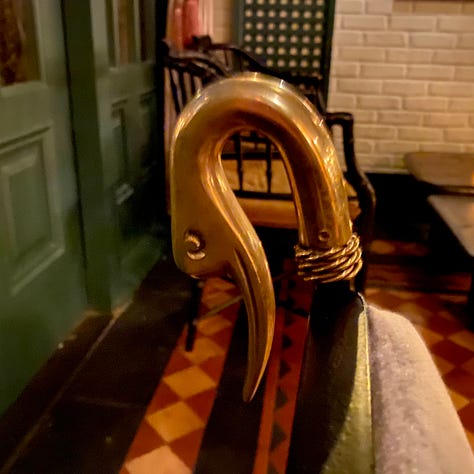
I’m drinking my martini in one of the hotel’s solariums – a indoor-outdoor sort of room with an exquisite tiled floor (that was once part of a New York sanatorium). There are new velvet cushions and marble tabletops. Brass accents abound. The backs of the chairs curve into brass swans’ necks. The French doors are painted a Victorian teal. Above me, there’s a giant skylight, covered this evening with generously billowing retractable drapes.
Nothing is unfinished. Nothing is inconsistent. Nothing is broken. Nothing is not clean. Sitting in this room off the lobby bar, nibbling on nuts that are served in a pewter dish, I’m conscious of how much work is required just to maintain a room like this.
But to create it?
Regular people sit at home with their pre-dinner drink say things like: What about a skylight in here? Or: We could reupholster these cushions. Or: I really should get this floor redone.
Not only has everything here been done, it’s been done according to a very clear and very admirable overarching concept: namely, The Hotel Chelsea is legendary. Its history must be apparent.
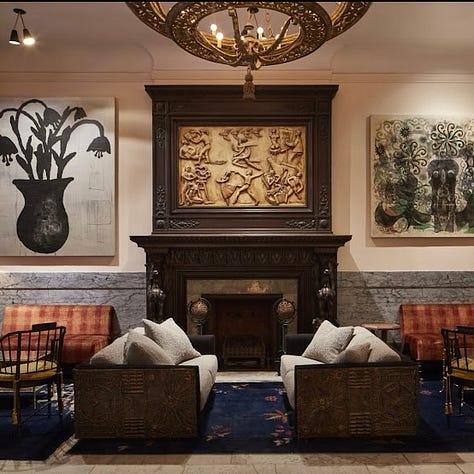
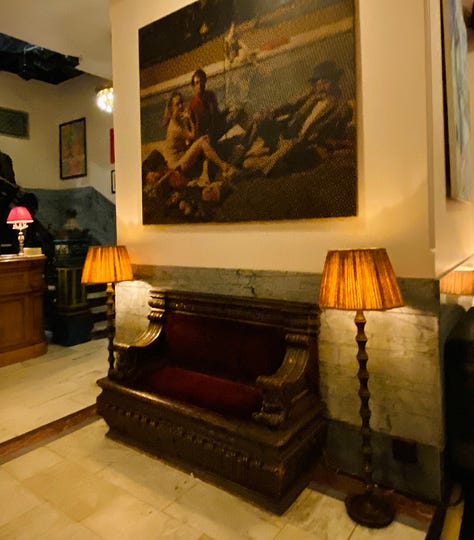

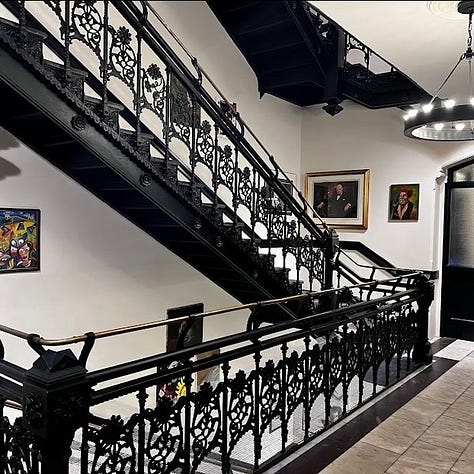
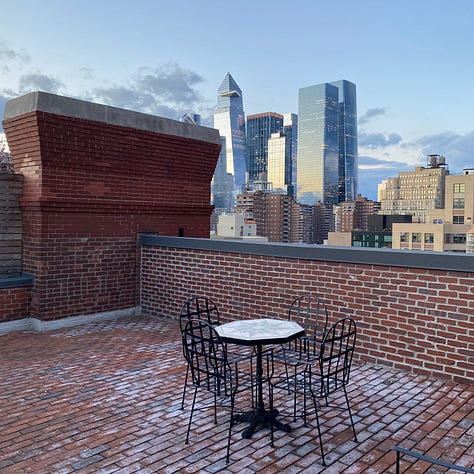
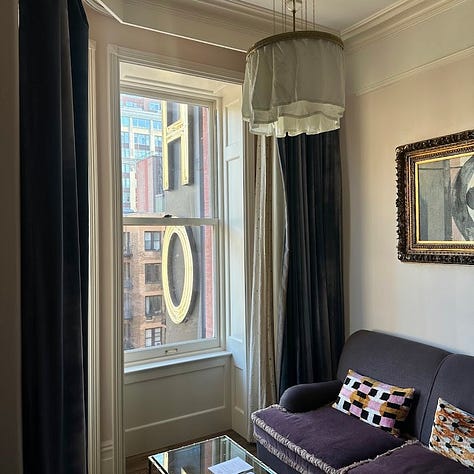
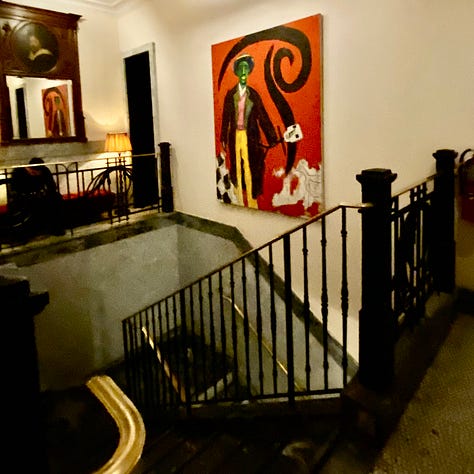

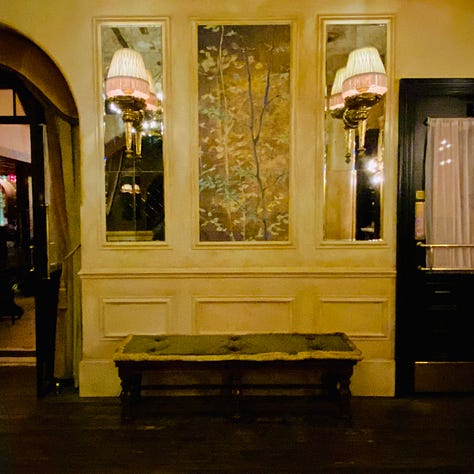
What history?
How far back would you like to go? Mark Twain? He stayed here, dodging debtors, in the late 1800s. He used to hold forth in the dining room.
Dylan Thomas finished writing Under Milkwood here. Then, one night, he walked to a bar and drank 18 whiskies. He came back to the hotel and died in his room.
Jack Kerouac wrote parts of On The Road here.
Look at this list. So many artists not only slept here, but actually lived here. Like Bob Dylan. Like Leonard Cohen. Like Patti Smith and Robert Mapplethorpe.
When MacPherson, Drukier and Born bought The Hotel Chelsea, they understood the building’s legacy.
In aesthetic terms, they wanted to retain its “louche allure”; particularly its “notoriety as a shabby bohemian sanctuary” from the late 1960s onwards.
The challenge was to balance preserve historical features and evidence of arty living, while elevating the spaces to the level of luxury.
The later history of the hotel was fascinating, but the damage to the building was significant.

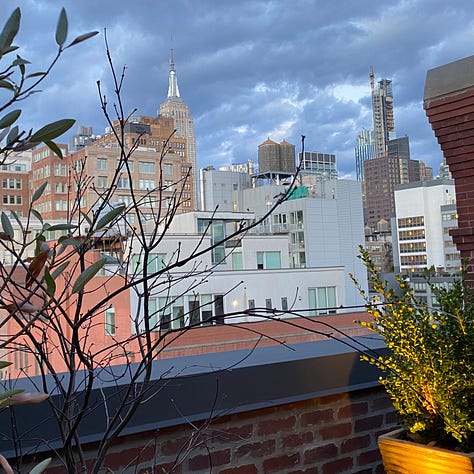
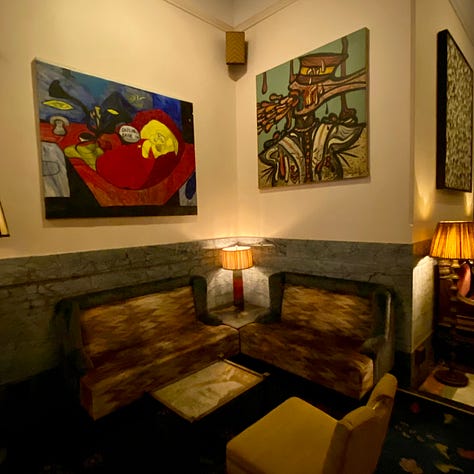

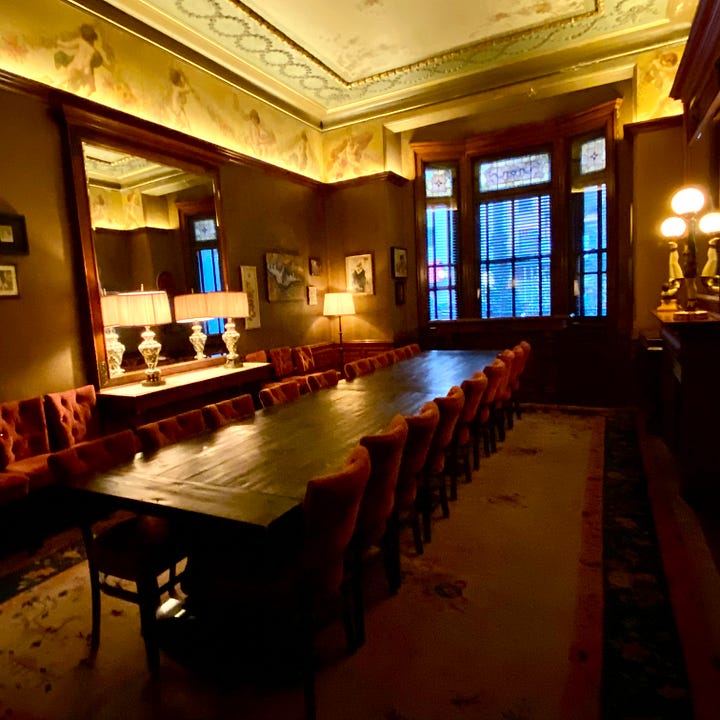
For 43 years, from 1964, The Hotel Chelsea had a part-owner-manager named Stanley Bard. During his tenure, the hotel was a “shabby, no-limits haven”, according to Deadline Magazine’s 2017 obituary of Bard.
Weird stuff was going on in the hotel. There were animals in the halls. Drug dealers were allowed upstairs. Experimental artmaking was taking place in the rooms. There were late night noises.
From Bard’s point-of-view, the good thing about the artists was they didn’t make much of a fuss about the cracked basins, the poor heating and the bugs. The majority of residents and guests didn’t make a fuss at all – not even about crimes and fires.
Bard was known to be rock-star and actor friendly – and the hotel was known to be a place in which money and comfort were not priorities.
In the Bard years, The Hotel Chelsea “not only housed, at one time or another, scores of rock stars (Madonna, Jimi Hendrix, Joni Mitchell, Iggy Pop, Bette Midler, among many others) and actors (Jane Fonda, Uma Thurman, Michael Imperioli), but itself became a presence in film and on TV.”
Deadline continues: “No doubt the grimmest event during the Bard era was the 1978 stabbing murder of Nancy Spungeon by Sex Pistols punk rocker Sid Vicious”.
Ethan Hawke made a documentary inside called Chelsea Walls (2001) and Abel Ferrara made Chelsea On The Rocks seven years later.
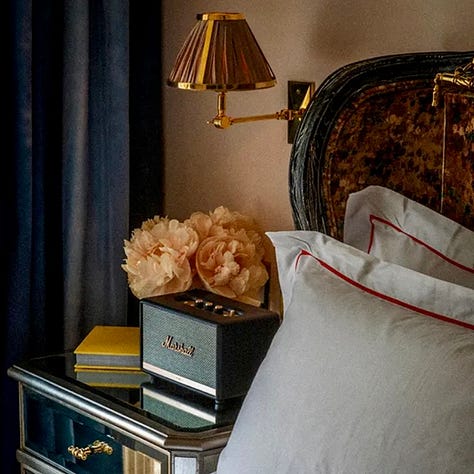
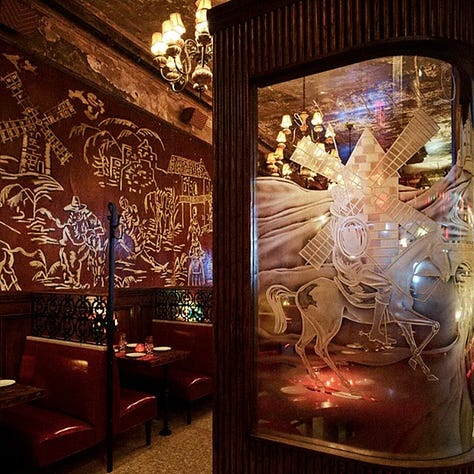
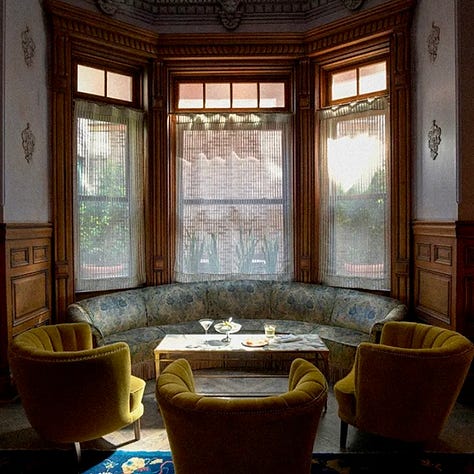
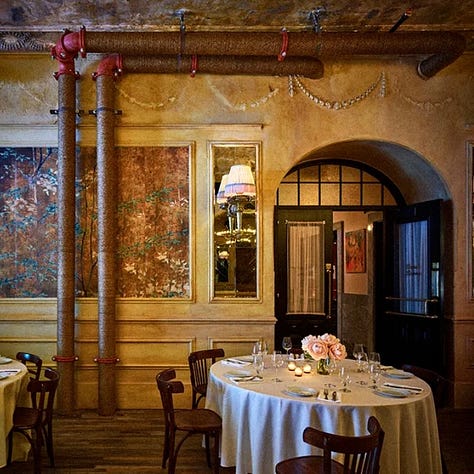
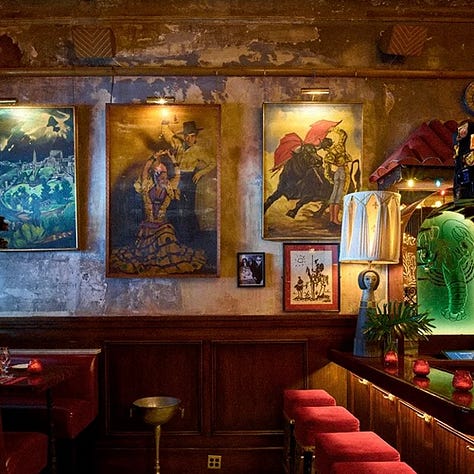
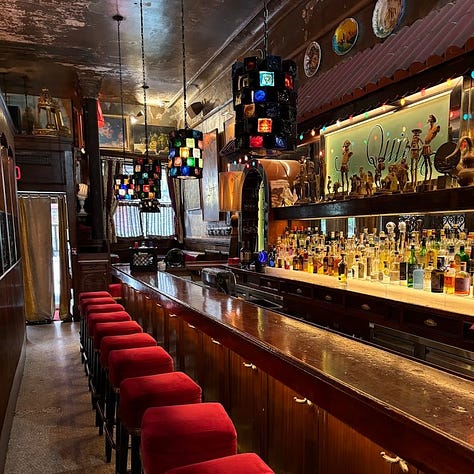
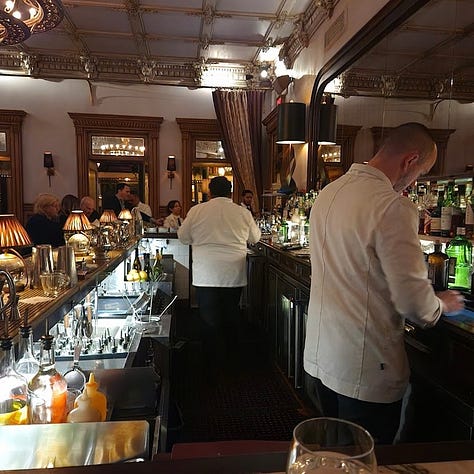
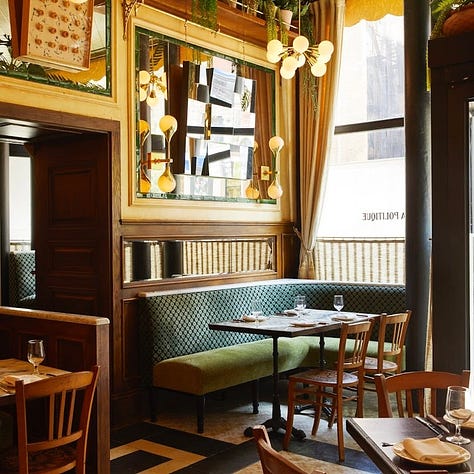
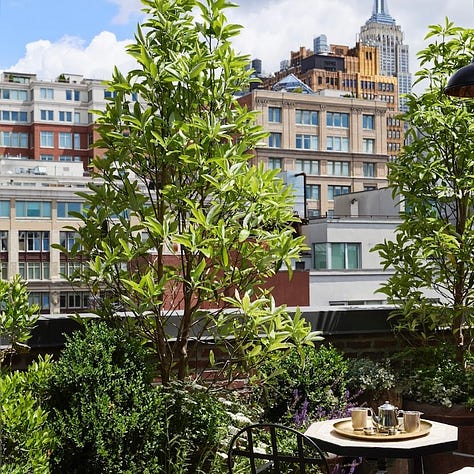
How did MacPherson, Drukier and Born foreground The Hotel Chelsea’s history?
The paintings displayed on the hotel’s walls are actual paintings that were offered in lieu of rent.
In some of the public rooms on the ground floor, walls and ceilings and pipes have been left bare.
The cast iron balconies, the staircase, downstairs mosaic floors and the iconic sign are all original.
The decor style throughout is in keeping with the age of the building. It’s vintage boutique chic – with antique carpets, frou-frou lampshades, miles of velvet and cherubs painted on the walls.
The interior of the elevator is steam-punkish: wall-to-ceiling black with pressed metal buttons.
The luxury edge is provided by giant mirrors, mid-century modern lounge chairs covered in animal-inspired print and generous lengths of Italian marble.
Solid marble door handles, monogrammed sheets and the spectacular spa and fitness centre upstairs are what say Luxury-capital-L.
The staff express The Hotel Chelsea’s new aesthetic too. Everyone who works at The Hotel Chelsea is smartly dressed and polite. But the manager has a fierce undercut, the receptionist has multiple piercings and the doorman’s forearms are covered in tattoos. The maitre’d is wearing neck-to-calf pink sequins. She looks like a fairytale character and it’s wonderful.
The candles flicker.
This place is one-of-a-kind.
I’m amazed and grateful that so many people have put so much money, time and effort into this “old broad’s” makeover.
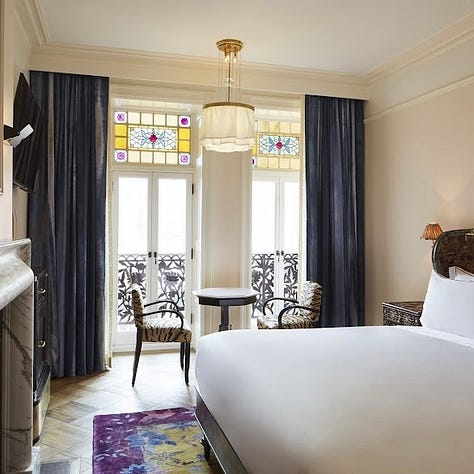
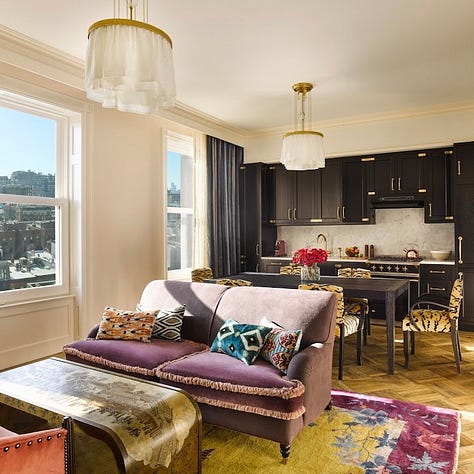

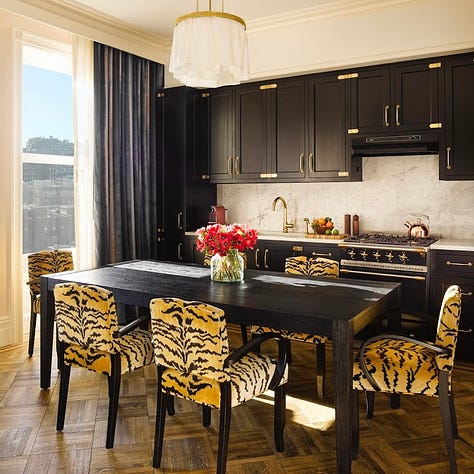
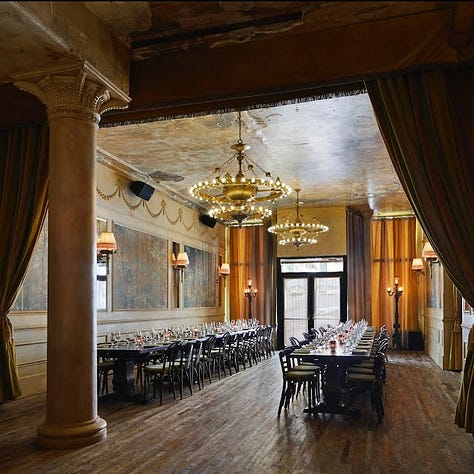
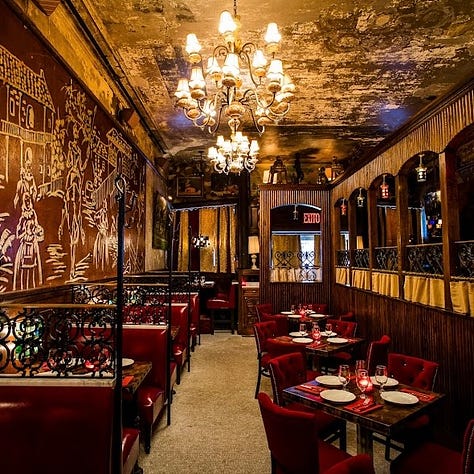
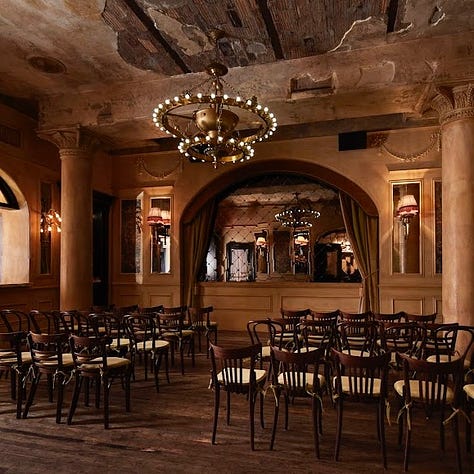
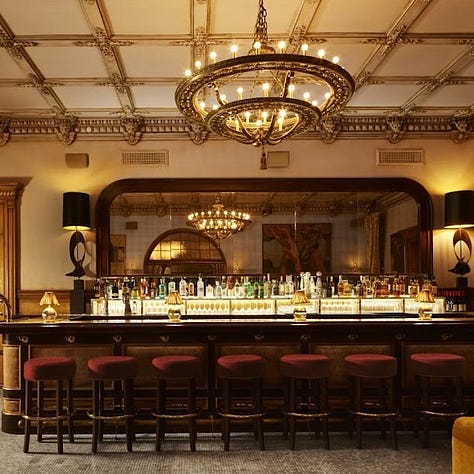
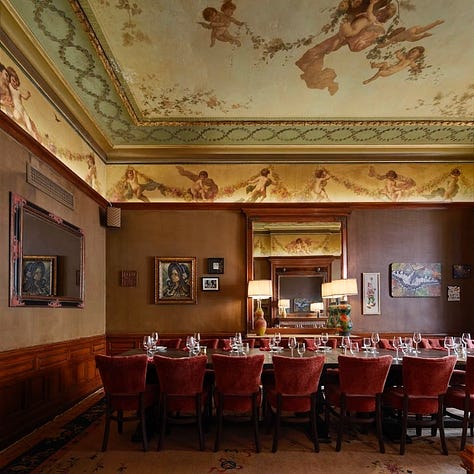
Additional photos: The Hotel Chelsea website, Philippa Braithwaite and Andrew Moore for The World of Interiors





Wow! 🤩 I love this. Thanks for sharing.
Love this! Maybe one day you find yourself near Boston and will book a visit to the Edward Gorey Museum and then write another story to delight us x